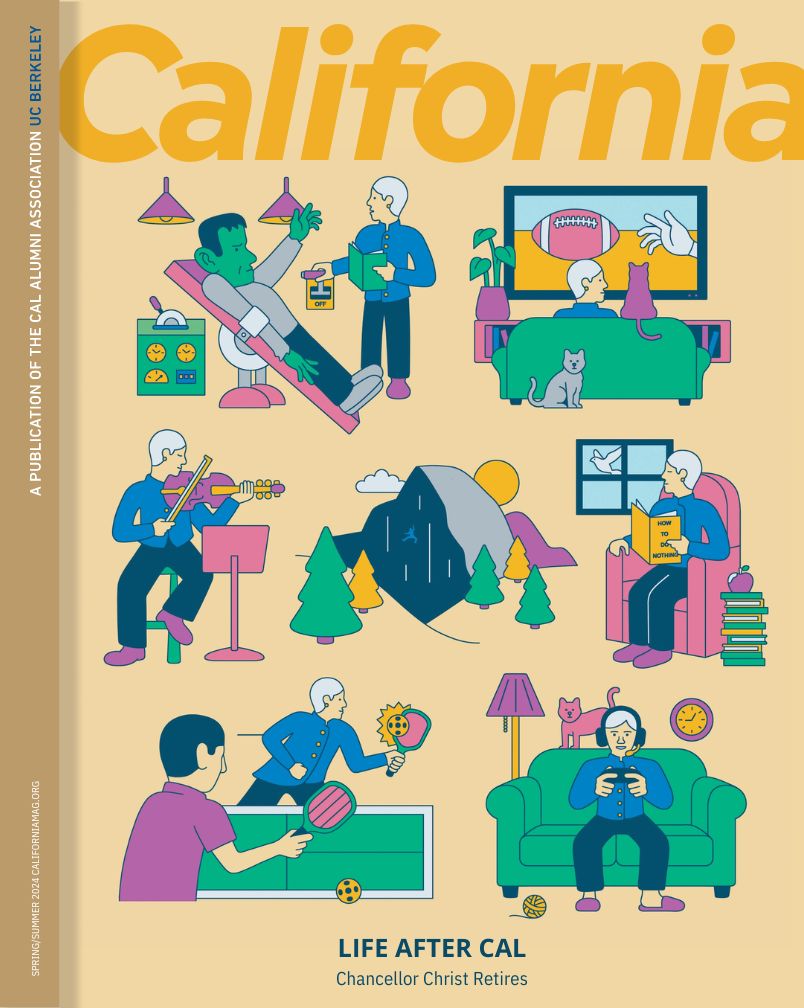It used to be that running a college newspaper was a simple business: The editorial staff reported stories, the advertising staff sold ads, and the paper was printed and distributed around campus. Fast-forward to 2013, and things are very different.
The same economic forces that have wreaked havoc on the newspaper industry—estimates of industry-wide job losses range from 30 to 40 percent in just the last decade—have reverberated through college newspapers. That is forcing many college newspaper staffs to reinvent both their paper’s financial and editorial models. At UC Berkeley, the 142-year-old Daily Californian is a prime example.
Hit hard by the recession, the paper saw its print ad revenues drop. An anonymous donor agreed to step in to fill the gap, but only until the paper could develop a diversified funding model. “Our donor did give everything she had pledged and more,” says Daily Cal Editor-in-Chief and President Sarah Burns. Student and professional staff led by the paper’s board of directors worked for more than a year on a strategic plan to turn the paper around financially and invest in its digital presence.
Today the paper’s budget is on track and it has “created from scratch” an online department, says Burns. After diversifying its funding model, it is seeing a 30 percent increase in the number of page views year-over-year and month-over-month.
Burns, a senior English major who started at the paper as a freshman, says the Daily Cal is “throwing out special projects every few weeks” to “a really excited readership.” It has brought on a dozen or so online developers and designers, a web producer, and a social media manager to support a much greater digital presence. An online managing editor is third in command at the paper.
The Daily Clog, a lifestyle blog in the style of BuzzFeed, has developed an extensive readership, and the paper hopes to debut a mobile site in the spring. In one example of innovation, a story about a football player on campus who is also a pianist featured clips from the audio platform SoundCloud integrated throughout the story.
New fundraising is crucial. The paper hired a professional fundraiser in July to reach out to individuals connected with the university, organizations and corporations, with the goal of building an endowment. And last year, students agreed to a $2-per-semester fee to support the Daily Cal—a fee which stipulates that the paper continue printing four days a week for at least the next four years. The rest of the paper’s revenues come from print and online advertising.
The financial model “seems to be working” says Mike Lovas, chairman of the board of the Daily Cal Education Foundation, a nonprofit that raises money in support of the paper. But given that advertising revenue is on something of a downward trend, a lot is riding on donations, he says.
Industry experts have noted a contraction in the college newspaper marketplace in the past 12 to 18 months. This may be due to a “trickle-down effect” from the professional press, says Dan Reimold, a college media scholar and professor of journalism at St. Joseph’s University in Philadelphia. In a recent report on the perils faced by college newspapers, the New York Times cited research from the marketing company re:fuel indicating that students still enjoy picking up copies of their campus papers, “free and convenient as they are, stacked in the student union and dorm lounges.” In 2011, 60 percent of students read their college paper, and of those, only 16 percent preferred the idea of getting college news online.
Still, digital news consumption is growing.
Tammy Nelson, re:fuel’s vice president of marketing and research, praises the Daily Cal and other college papers for taking “strong, smart steps to keep themselves afloat.” The challenge is finding the right formula to deliver great journalism and be financially sound, she says—adding that as breeding grounds for future journalists, college papers “are essential to the future of free press in this country.”
To support the Daily Cal’s efforts, visit dailycal.org and click the “donate now” button on the right.


















